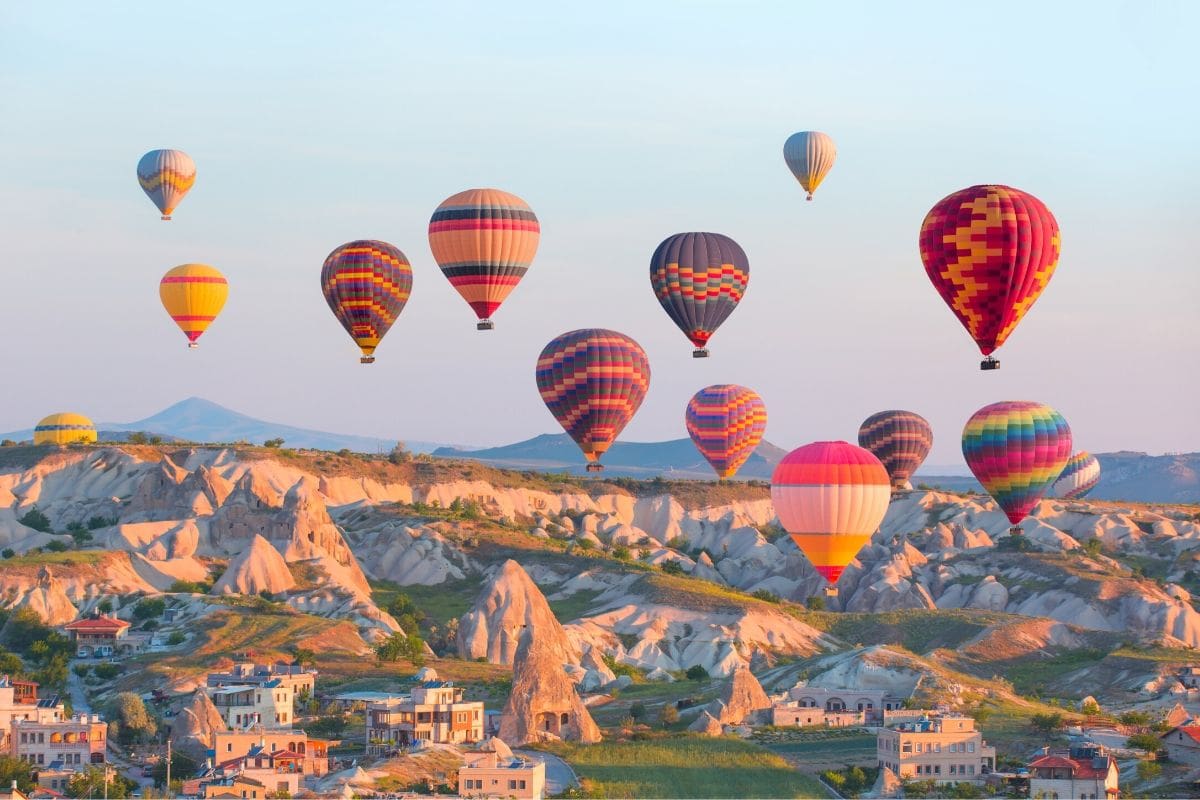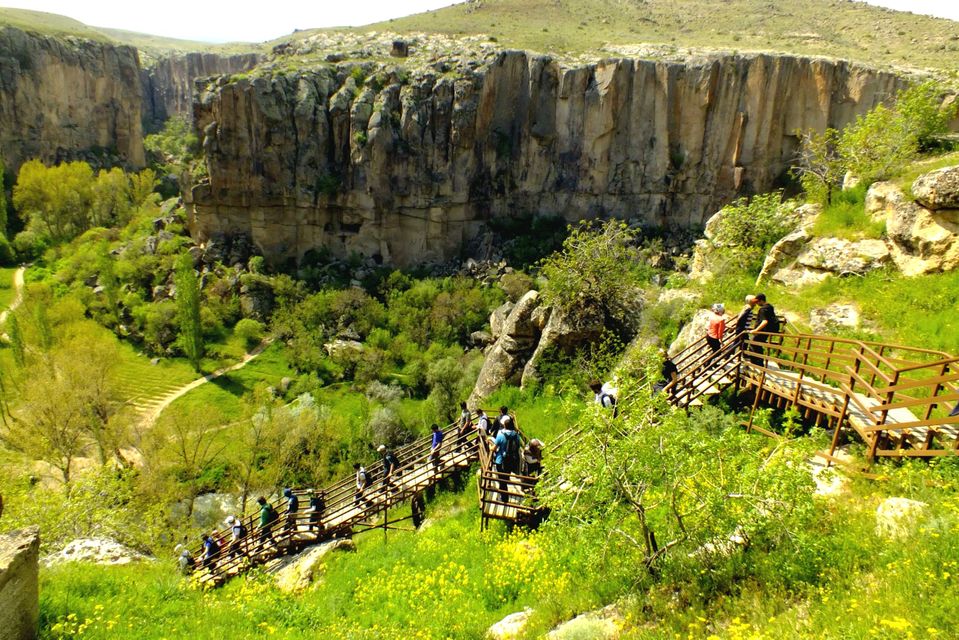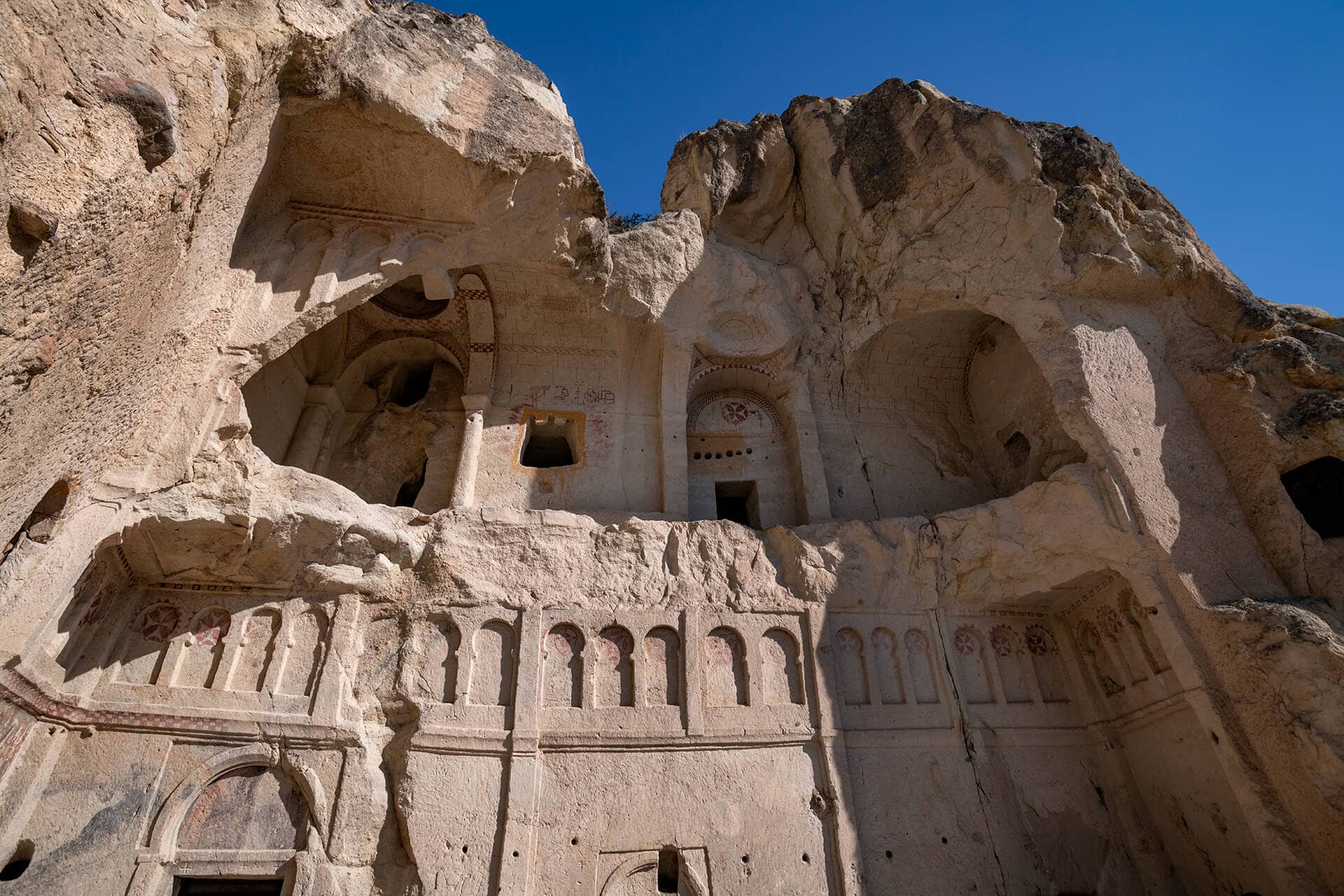Cappadocia, located in the heart of Turkey, is a region like no other, offering visitors surreal landscapes, ancient history, and once-in-a-lifetime experiences. It’s most famous for its unique geological formations, known as fairy chimneys, as well as for its enchanting hot air balloon rides and ancient cave dwellings.
1. Hot Air Balloon Rides
Cappadocia is one of the best places in the world for hot air ballooning, thanks to its stunning landscapes and clear skies. Here’s why a balloon ride should be at the top of your list.
- Why It’s Special
A Cappadocia hot air balloon ride offers breathtaking views of the region’s volcanic rock formations, valleys, and cave dwellings. Watching the sunrise over the fairy chimneys from the air is a magical experience. - What to Expect
- Timing: Most balloon rides take place at sunrise, providing the best light for photography and a peaceful atmosphere.
- Duration: The flights last about an hour, with some companies offering longer options.
- Safety: Cappadocia’s hot air ballooning industry is highly regulated, with strict safety protocols in place. Many companies also include insurance as part of the package.
- Best Providers:
- Royal Balloon
- Butterfly Balloons
- Kapadokya Balloons
Insider Tip: Book your hot air balloon ride in advance, especially during peak travel seasons, as spots fill up quickly.

2. Fairy Chimneys and Unique Landscapes
Cappadocia’s landscape is truly otherworldly, shaped by volcanic eruptions and millennia of erosion.
- Fairy Chimneys
These tall, thin spires of rock are the result of volcanic ash hardening over time and being eroded by wind and rain. Found across the region, they resemble the chimneys of fairy-tale houses, giving them their whimsical name.
Best Places to See Fairy Chimneys:- Göreme National Park: A UNESCO World Heritage Site, it’s home to some of the most famous and photogenic fairy chimneys.
- Pasabag (Monks Valley): Known for its mushroom-shaped fairy chimneys, this valley offers scenic walks through these towering rock formations.
- Love Valley: Famous for its unusual rock formations, this valley is popular for both hiking and photo opportunities.
- Other Geological Wonders:
- Devrent Valley (Imagination Valley): This valley features rock formations resembling various animals and objects, making it feel like a natural sculpture park.
- Uchisar Castle: This natural rock citadel, located at the highest point in Cappadocia, offers panoramic views of the region.
.jpg)
3. Ancient Caves and Underground Cities
Cappadocia’s soft volcanic rock has been carved into homes, churches, monasteries, and even entire underground cities over centuries.
- Göreme Open-Air Museum
This outdoor complex features a collection of rock-cut churches and monasteries dating back to the Byzantine era. The frescoes inside the churches are remarkably well-preserved, showcasing religious art from the 10th to 12th centuries.
Highlights:- Tokalı Church: Famous for its vibrant frescoes.
- Karanlık (Dark) Church: Known for its dark interior, which has preserved its striking colors.
- Underground Cities
Cappadocia is home to several underground cities, built by early Christians to hide from invaders. These cities feature multi-level tunnels, ventilation systems, and even stables and churches.
Top Underground Cities to Explore:- Derinkuyu: The largest underground city in Cappadocia, capable of housing up to 20,000 people. It has eight levels open to visitors, with narrow tunnels and hidden rooms to explore.
- Kaymakli: Another impressive underground city with labyrinth-like tunnels. It’s slightly smaller but still fascinating to explore.
- Cave Hotels
One of the most unique ways to experience Cappadocia is by staying in a cave hotel. These accommodations are built into the rock, blending modern comforts with ancient surroundings.
Top Cave Hotels:- Argos in Cappadocia
- Museum Hotel
- Kelebek Cave Hotel
.jpg)
4. Hiking and Exploring Cappadocia’s Valleys
Cappadocia is a hiker’s paradise, with a variety of trails that take you through scenic valleys, fairy chimneys, and cave dwellings.
- Ihlara Valley
A lush gorge with a flowing river, Ihlara Valley is a 14-kilometer-long trail lined with ancient cave churches and frescoes. The valley is a tranquil escape, with lush vegetation providing a striking contrast to Cappadocia’s dry, rocky terrain. - Rose Valley
Famous for its pink-hued rocks, Rose Valley is a popular spot for sunset hikes. The trails here wind through orchards, vineyards, and hidden churches, offering spectacular views of the unique landscape. - Red Valley
Adjacent to Rose Valley, the Red Valley is known for its striking red and orange rock formations. Hikers can explore cave dwellings and hidden churches along the way.
Insider Tip: Start early in the day to avoid the heat, and don’t forget to pack plenty of water, as some trails are long and without shade.

5. Cappadocia’s Rich Cultural History
Cappadocia’s history is as fascinating as its landscape, with evidence of ancient civilizations, early Christianity, and the Ottoman Empire.
- Early Christian Heritage
The region served as a refuge for early Christians fleeing Roman persecution. They carved out churches and monasteries in the soft volcanic rock, many of which are still preserved today. The frescoes in these churches depict biblical scenes and saints, offering a glimpse into early Christian art and worship. - Pottery in Avanos
The town of Avanos, situated along the Kızılırmak River, is famous for its pottery, a tradition that dates back to the Hittites. Visitors can watch master potters at work and even try their hand at the wheel.
Where to Visit:- Guray Ceramic Museum: Showcases both ancient and modern pottery from the region.
- Chez Galip’s Pottery Workshop: One of the most famous pottery workshops in Avanos.

6. Best Time to Visit Cappadocia
Cappadocia can be visited year-round, but the best time is during the spring (April to June) and fall (September to November) when the weather is mild. Summers can be hot, while winters are cold and snowy, though the snow-covered fairy chimneys create a magical winter wonderland.
7. Local Cuisine
Cappadocia offers some delicious regional dishes that you can’t miss.
- Testi Kebab
A traditional Cappadocian dish, Testi Kebab is a slow-cooked stew of meat and vegetables sealed in a clay pot. The pot is broken open at the table, adding a theatrical element to the meal.
Where to Try: Old Greek House Restaurant (Mustafapaşa) - Gözleme
A savory Turkish flatbread stuffed with cheese, spinach, or meat, often sold by street vendors or small local eateries.
Where to Try: Street stalls in Göreme or Avanos
Conclusion
Cappadocia is a dream destination for travelers seeking natural beauty, adventure, and a deep connection to history. From soaring above fairy chimneys in a hot air balloon to exploring ancient cave dwellings and hiking through surreal landscapes, Cappadocia offers an unforgettable experience at every turn.
